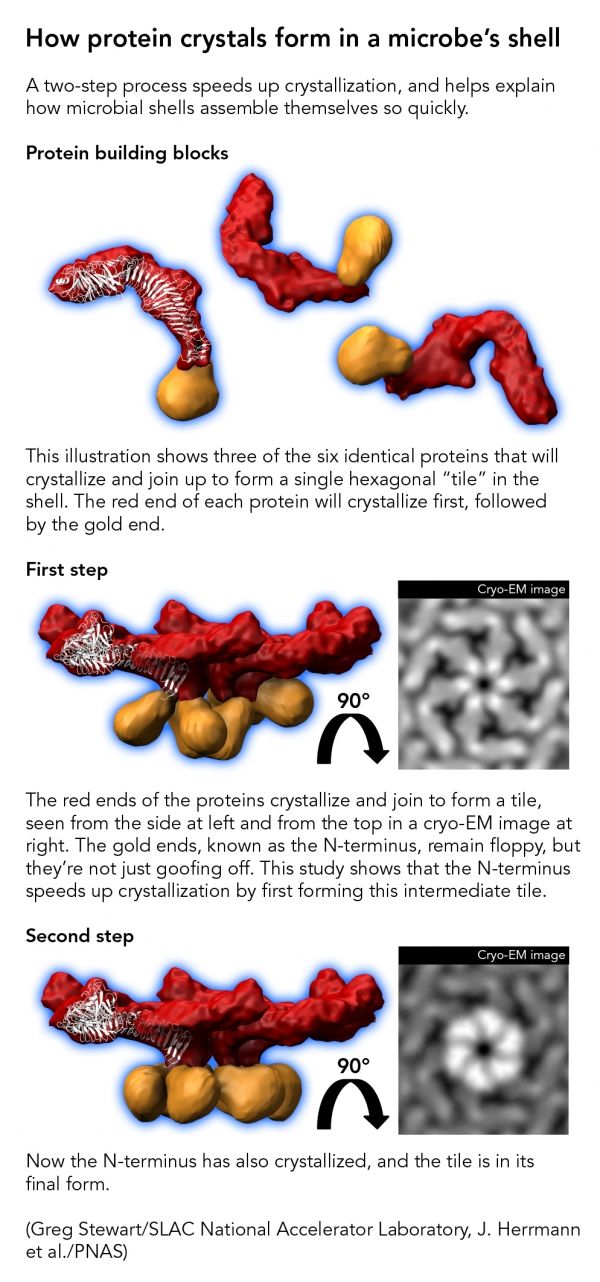Many microbes wear beautifully patterned crystalline shells, which protect them from a harsh world and can even help them reel in food. Studies at the Department of Energy’s SLAC National Accelerator Laboratory and Stanford University have revealed this food-reeling process and shown how shells assemble themselves from protein building blocks.
Now the same team has zoomed in on the very first step in microbial shell-building: nucleation, where squiggly proteins crystallize into sturdy building blocks, much like rock candy crystallizes around a string dipped into sugar syrup.
The results, published today in the Proceedings of the National Academy of Sciences, could shed light on how the shells help microbes interact with other organisms and with their environments, and also help scientists design self-assembling nanostructures for various tasks.
Read more at DOE / SLAC National Accelerator Laboratory
Image Credit: Greg Stewart/SLAC National Accelerator Laboratory


